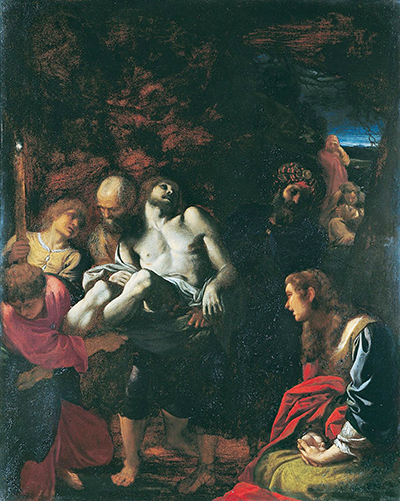Annibale Carracci was an Italian water-colourist and tutor, was full of zipping in Bologna and far ahead in Rome.
With his colleagues, Annibale was one of the parents, if not the originator of a principal group of the baroque elegance, pirating elegances from the north and south of their hometown and ambitious to reappearing in standard monumentality, but totalling vital vigour. The water-colourists working under Annibale at the Palazzo Farnese colonnade would have a pronounced inspiration in Roman canvas for eras.
Annibale Carracci was born in Bologna, and the entire prospect was first apprenticed in his family. In 1582, Annibale, his colleague Agostino and his friend Ludovico Carracci unlocked a water-colourists' studio. While the Carracci’s laid stress on the stereotypical Florentine undeviating draftsmanship, as illustrated by Raphael and Andrea, their concern in the radiance colours and foggier limits of objects imitated from the Venetian water-colourists, particularly the works of Venetian oil water-colourist Titian, which Annibale and Agostino studied during their journeys around Italy at the command of the elder Carracci Lodovico. This extensiveness was to turn out to be the signature trait of the artistes of the Baroque Emilian School. In many primary Bolognese artworks by the Carracci's, it is problematic to tell apart the individual hand-outs made by each.
The custom of Italian Rebirth portrait and the established Rebirth artists like Raphael, Michelangelo, Correggio, Titian and Veronese are all water-colourists who had a substantial inspiration on the work of the Carracci, in his usage of colours. Carracci rested the basics for the birth of the Baroque landscape. The portraits of Annibale are stirred by the Venetian pictographic perception and specifically the portraits of Paolo Veronese. Among the many amazing artworks painted by Carracci, the Burial of Christ has been praised by many.
This deeply moving painting was splattered for one of Carracci's clients, Astorre di Vincenzo Sampieri, standard of the Minster of San Pietro in Bologna. Envisioned to bid to an imperative personality of Rome, it was well-maintained by Sampieri, who referred a copy to Guido Reni as a substitute. From the painting, you can discern the melodramatic episode from the burial slot, the torch-lit typescripts; via an inaugural, the holy womanhood can be appreciated in contradiction of a scenery ignited by dawn. The portrait was very well-regarded. There is much copy for you to appreciate.
Carracci's style was ground-breaking for its unparalleled naturalism and watchful, unbiased learned from life. Unlike present-day Caravaggio, Annibale was competent to mix that world-shattering common sense with the unrealistic excellence of standard and Reawakening art, thus inventing a style of romanticized pragmatism that signified the bizarre fantasy of Trait and the gloomy, persistent saneness of Caravaggio. Carracci was clever enough to apply oil painting techniques. This technique is known for bringing out the best watercolour ever. Ave you ever tried it? Tried it out and see for yourself. There are more than enough Carracci’s watercolour for you to appreciate. Just visit the Louvre in Paris.




